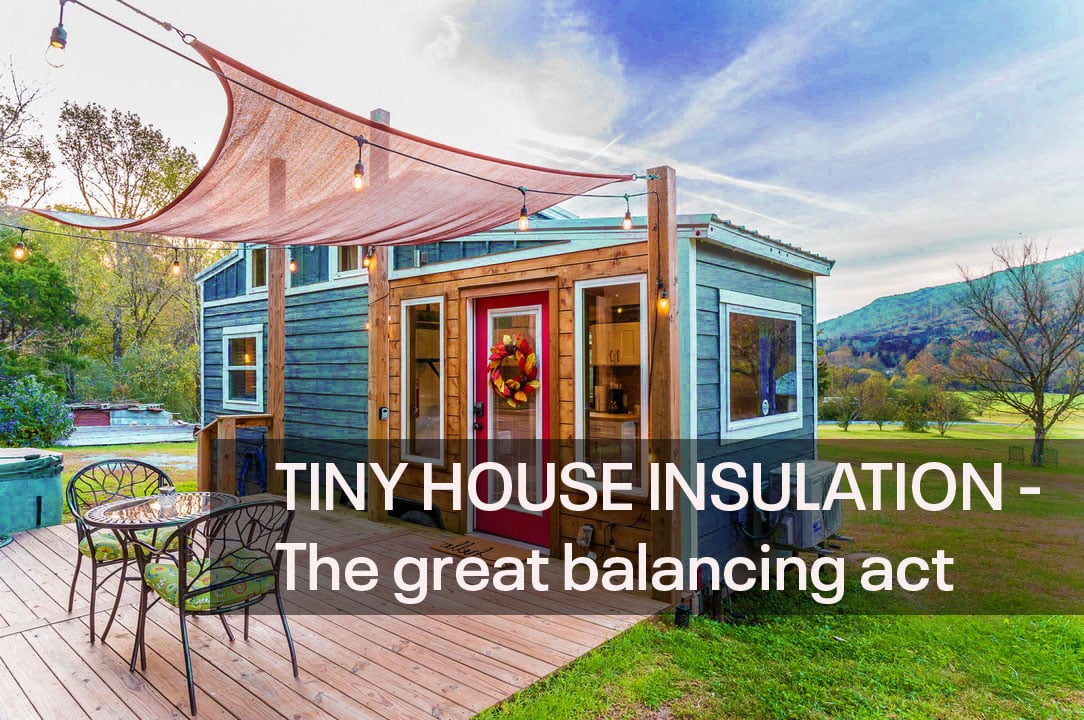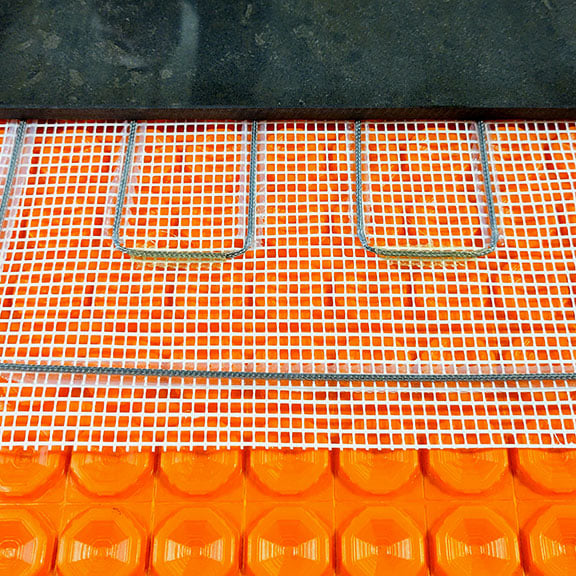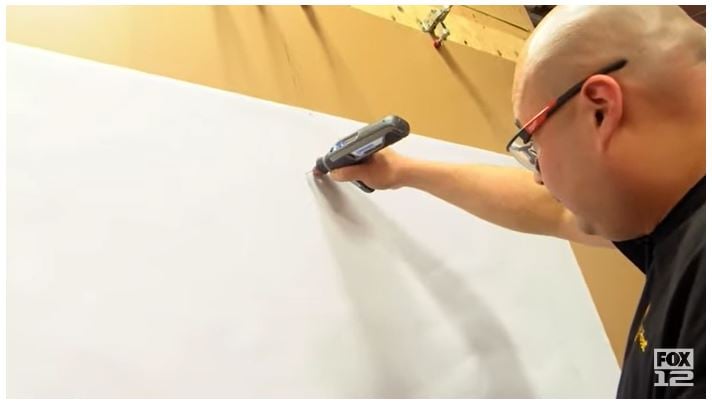Guest blogger: TinyHouse.com
When you’re ready to consider the heating system, talk to Gold Heat about Black Gold radiant floor heat film for low-profile flooring. You DO have enough power to run radiant floor heat – let us tell you why.
One of the best things about tiny houses is energy efficiency — that’s an undeniable fact. However, that’s not just a given; owners and engineers put in a lot of hard work to ensure that tiny houses’ insulations perform their functions well. And among other things, that means choosing the most effective type of insulation for your particular situation. Don’t worry if you don’t know anything about this — after all, that’s precisely what we’re going to help you with!
Efficient insulation matters
Because a tiny house is, well…tiny, it’s always going to be less expensive to insulate than a regular-sized house (and that goes for radiant floor heat, too!). Still, that doesn’t mean that a tiny house is always efficient from energy.
If you want to truly get your money’s worth from a tiny house and the major appliances — what you need to do is to make sure that you’ve got the best possible insulation plan for your new small household. Not only will this ensure that you’re making the least possible emissions, but you will also be able to save more money than you ever thought you could!
How to approach tiny home insulation
So, if you don’t know much about the insulation of a tiny home — how do you approach this crucial issue? Well, you need to hit the right kind of balance between two crucial metrics — your thickness and your R-value. Don’t worry — we’ll explain it all. Suffice it to say that you need to maintain a stable internal climate in your household, and considering these things will definitely help with that.
One of the things that you need to keep in mind is — heat tends to rise. Considering that, you need to make sure that your insulation plan reflects that. In practice, that entails ensuring that your thickest layers of insulation must be placed on the ceiling of your home; conversely, the floor will require the thinnest layers, and the walls are something in between.
Also, ensure that the proper insulation practices are done while you’re still planning the construction of your home. That’s a necessity because you want to be confident that you have enough space for the ceiling, floors, and walls — along with the considerations regarding your other subjective conditions that you need to keep in mind.
For instance — if you’re planning on a THOW — or a tiny house on wheels, that’s an entirely different beast compared to a tiny home created with a solid foundation.
Roof insulation
The first part of the insulation of your tiny home that we’ll tackle is your roof. Generally, this is one of the most flexible and forgiving parts of the tiny house because of its structure. Mainly, this is because adding extra thickness to the roof of your tiny house does not mean that you need to sacrifice any living space. Instead, you’ll be able to enjoy perfect comfort as you make the insulation thicker.
Plus, the fact that your roof is on a vertical means that you can freely use more affordable types of insulation; they’ll be just as effective as long as it’s thick. And make no mistake, the thickness is the number one metric when it comes to roof insulation; it’s what “traps” the circulating heat in your home as it begins to rise.
This, however, can be problematic for a THOW due to the height limitations and THOW builders trying to maximize headspace in the tiny home. It’s essential to take this into design consideration.
Floor Insulation
Next up, we’ve got floor insulation. This is usually crucial for the energy efficiency of heating and cooling in any home, but it’s particularly crucial for tiny homes. You don’t want the surface that your tiny home is situated on to interfere with the insulation in the flooring.
So, if you’re making a tiny home on wheels — you need to ensure that the insulation is perfectly fitted into the trailer’s frame. Unlike in your roof insulation, here, you can’t count on having as much space to have a lot of thickness in your insulation material. Keeping that in mind — it needs to be of a sufficient degree of quality.
Insulation measurements
One of the main ways experts measure the effectiveness of insulation is the R-value. We’ve already mentioned that this is an important metric, though we haven’t talked about what it’s used for much.
This value provides an insight into the physics of thermal resistance in your insulation. If you have a higher R-value, the insulation materials provide a better degree of thermal resistance.
When it comes to the best practices regarding insulation in tiny homes, we recommend sticking to materials with the highest possible R-values that you can get. This is because space is a scarce commodity with this kind of house; you don’t want to have something that takes up a lot of space with thickness.
Also, it would help if you remembered that R-value isn’t an ever-present constant. In reality, this value is prone to shifting as time goes on. There are plenty of factors that can reduce thermal resistance efficiency in your insulation, such as accumulated moisture, temperature shifts, and, most importantly, age.
Picking the proper insulation in terms of climate
The kind of insulation that you’ll pick doesn’t just depend on the specifics of your home. They also depend on where your tiny home is situated. In other words, the geographical location of the home and its accompanying climate are sure to play huge roles in this.
While consulting someone about your little home insulation in the United States, check which of the eight US climate zones you are in, and then choose the appropriate type of material for the insulation. There are different recommended R-values for each of them.
Wrapping Up
As you can see, picking the precise best kind of insulation for your tiny home isn’t always easy. On the one hand, energy efficiency is less of a problem than with traditional homes; but on the other, you have less space to achieve a high R-Value. Balancing these factors will be crucial to the success of your construction endeavor!





